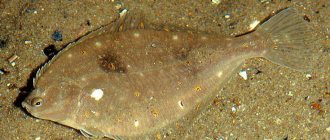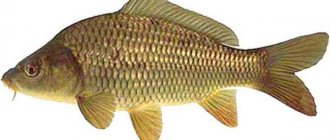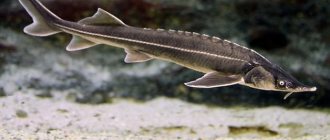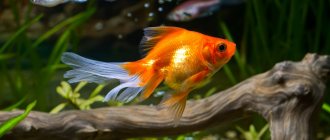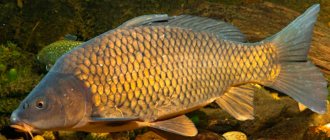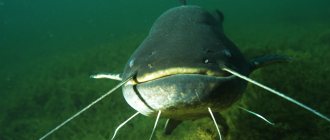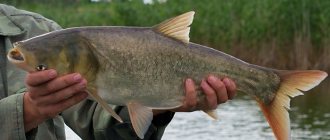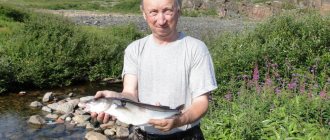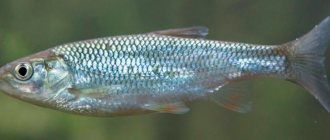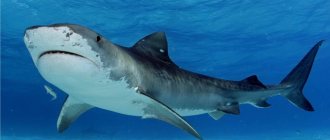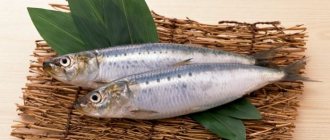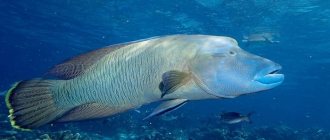Pink salmon is an anadromous (coming out of the seas into rivers to spawn) fish of the salmon family. The Pacific salmon group is the most numerous, and pink salmon is its brightest representative. The fish spends most of its life in the salty, cold water of the seas and oceans, only going to fresh water bodies to spawn.
The fish got its name from its unusual appearance. During the spawning period, males develop something like a hump. Humpback – humpback, pink salmon.
The salmon family belongs to the relict family. Thus, the most ancient traces of its representative, who lived about 50 million years ago, were discovered in the waters of North America. After several tens of millions of years, these fish have not evolved much. In the form in which we see salmon now, they met in the period from 24 to 5 million years.
The second name of this commercial fish is “pink salmon”. The name reflects the color of pink salmon meat, which is pink, red, and coral. This exquisite fish is considered by gastronomes to be “red fish” and its meat is highly valued among gourmets around the world.
Where does it live in Russia?
On the territory of the Russian Federation, the zones where pink salmon are found are located near the shores of the Arctic and Pacific oceans. The fish goes to spawn in the Amur, Kolyma, Lena, as well as the Yana and Indigirka rivers. Its habitat is cool waters with temperatures from + 5 to + 15°C. When reaching + 25°C or more, the death of individuals occurs.
In Russia, pink salmon fish inhabits the northern regions of Karelia, where there are more than 60,000 lakes and 30,000 rivers. The largest of these reservoirs is Ladoga. Salmon come from the White Sea to the Shuya and Keret rivers to spawn. Pink salmon is found in Primorye, Kamchatka, Sakhalin, and the Kuril Islands. Its migrations cover thousands of kilometers.
FACT! Along with the Siberian and Far Eastern regions, the fish has colonized the entire Kola Peninsula. This was the result of an attempt in the middle of the last century to artificially populate the waters of the Murmansk region with northern and Pacific pink salmon.
Sea or river
Found in salty waters, pink salmon fish enter freshwater bodies of water to spawn, after which the fry move back to the marine environment. In nature, pink salmon is distributed near Asian, Japanese, Canadian and American coasts. In the northern part of the USA it is found on the coast from the river. Sacramento to Alaska, randomly found in about. Upper Great Lakes system. It is also present in fresh waters of Michigan. The region of the Sea of Okhotsk and the Far East is distinguished by large catches. Not very successful attempts were also made to breed it artificially.
Pink salmon fish travel from salt to fresh water bodies. All this suggests that this representative of the aquatic fauna can be either marine or river in habitat. There are significant differences in how it looks. At sea, its color is silver with dark spots on its tail and fins. In river water, spots begin to spread over the head and then throughout the body. By spawning the predominant color is almost black.
Taste qualities also change depending on where the fish currently lives. The greatest value regarding useful qualities is inherent in pink salmon. In the river, its meat loses not only its taste, but also its peculiar reddish color.
Scientists have not made a specific conclusion about the main habitat to which the humpback fish belongs. These are both seas and rivers: moving from the ocean to fresh water one at a time, it then gathers in large flocks. The swimming process begins when the ice cover of a freshwater reservoir disappears. The vast majority of fry that returned to the sea have already reached the age of more than 2 months.
FACT! Pink salmon came to Norway in the 60s of the 20th century, migrating from the Kola Peninsula. Now a huge population is subject to destruction or is used as dog food due to its large size. Residents of the country believe that it pollutes the water environment.
How to cook delicious pink salmon - cooking recipes
You not only need to know everything about fish and how to catch it, the most important thing is to cook pink salmon deliciously. For this purpose, the most popular recipes for cooking fish were selected.
Pink salmon soup
This first course will decorate not only the everyday table, it can also be served on holidays. To prepare an unrivaled pink salmon soup with pearl barley, you need to cut off the front quarter of the carcass and boil a piece of fish (with the head) in 3 liters of salted water for about 15 minutes.
When the broth is ready, it’s time to take the fish out of it and throw large cubes of potatoes (from 4 potatoes), 2 tablespoons of pearl barley, grated carrots and separated pieces of meat from the head into boiling water. Next, cook for another 15 minutes, and then add finely chopped onion (half an onion), chopped garlic (2 cloves), bay leaf and other spices to your taste, as well as pepper and salt. Another 10 minutes of cooking and you can add the greens. At this stage, the fire should be turned off, the last component will be ready under the lid. The aroma that fills the kitchen during cooking will not allow you to wait long.
Pink salmon in the oven
There are many recipes for cooking this fish in the oven, but it is best prepared in foil, since it is baked in its own juices. For example, pink salmon baked in the oven can be prepared like this:
Mix peeled, washed and sliced pink salmon in a deep container with grated onion, crushed garlic, salt, pepper, lemon juice and vegetable oil. The number of ingredients is as follows: onion - half a head, garlic - 1 clove, juice squeezed from lemon - 2 tbsp. spoons, vegetable oil (preferably olive) - 1 tbsp. spoon.- Marinate covered in the refrigerator for 50-60 minutes.
- Wrap each marinated piece of fish in foil (separately), place everything in the oven and bake for 25 minutes at 180 degrees.
Thanks to the foil, the pink salmon will be stewed both in the marinade and in its own juice at the same time. The pieces turn out incredibly tasty. You can serve them with sprigs of young dill.
How to cook fish in another way? Pink salmon can be salted in spicy brine; this is the simplest salting.
Natural enemies
The salmon representative in question has quite a few enemies.
- Many other fish (grayling, kunja) eat large quantities of caviar.
- When returning to the seas and oceans, the fry are destroyed by predator fish and birds: seagulls, ducks.
- Adults feed on beluga whales, seals, and sharks.
- When the fish lives in the spawning grounds, it is eaten by eagles, otters, and bears.
- Human fisheries account for 37% of all global fish catches from pink salmon.
We should add competition among aquatic inhabitants that eat the same things that salmon eat.
Which family does it belong to?
Salmon (lat. Salmonidae) are valuable commercial fish that have red meat and caviar of the same color, which is why they are actively hunted. Pink salmon belongs to this family, endowed with its typical characteristics according to the description.
- Long body shape, somewhat flattened at the sides.
- Presence of scales. In pink salmon it is the smallest among salmon.
- On a small cone-shaped head there are small eyes and jaws with teeth.
The salmon family is the only one belonging to the order Salmonidae. Their typical feature is an adipose fin, which pink salmon also have. Its carcass is distinguished by blue and green shades on the back, silvery sides, and white belly. When transitioning to spawning, the fish stops feeding, so it changes. It becomes covered with dark spots, turning black just before the process of spawning.
The transformations also affect the form: the head lengthens and large teeth appear. The male specimen is distinguished by a hump formed on its back. The photograph shows that he has a more “predatory face” than the female. The transition to spawning in fresh waters and changes in appearance are a distinctive feature of salmon. The quality of meat at this time decreases significantly. Catching salmon for spawning purposes is prohibited. Any member of the family that is found in the Pacific Ocean dies after spawning, laying eggs once in its life.
Humpback fish also has its own differences in the family:
- lack of teeth on the tongue;
- white mouth, dark spots on the back;
- V-shaped caudal fin.
- smallest sizes.
The weight of an average individual is 2.5 kg with a length of 0.5 m. The size of the largest specimen is 76 cm, it weighed about 7 kg. By class it is a predatory red fish, lives more than 2 years. Pink salmon is one of the most famous representatives of the family. There is another variety of salmon, Atlantic: the fry live with the adults. The name of such species is “residential”. Those whose young go to the sea are called “anadromous”. They are caught only in salt water areas. Pink salmon is one of these.
Its Latin name, which is also an international scientific name, is Oncorhynchus gorbuscha. Its adoption dates back to 1792. This species is classified in the order Salmonidae, the class of ray-finned fish, and the phylum of chordates. The pink salmon fish is similar to other members of its family.
FACT! The word salmon comes from the Indo-European lax, which means “to speck” or “to a point.” The name of the family Salmonidae is associated with the concept of salio (that is, “jump”) due to the active behavior of its representatives during spawning.
Life of eggs - features of spawning
Most fish lay eggs during spawning. Females release eggs into the water, to the bottom or onto plants, and at this time male fish water them with milt - seminal fluid. As a result, the fish eggs are fertilized.
Fertility, i.e. The number of eggs that a female fish lays during spawning varies from species to species. For example, a female carp lays up to 3 million eggs during spawning. A female catfish spawns up to 500 eggs. What is the reason that some fish lay several million eggs, while others lay only a few hundred?
In most fish, fertilization of eggs is external. Therefore, both the eggs and the larva of the fish, which hatch two weeks after spawning, face many dangers in nature. A significant amount of eggs is not fertilized due to the lack of necessary conditions for fish spawning. Some of the eggs are carried away by the current and eaten by fish, amphibians, birds, insects and other animals.
Experiments have established that of the eggs laid by female carp, 97% of the fry do not reach the age of three, and 93% of the fish die within the first 7-10 days after spawning. This is explained by the fact that the early period of life in fish, like in other animals, is the most vulnerable. It is estimated that in some fish only one individual out of a thousand fry becomes an adult.
Caring for masonry and other mechanisms
Due to large losses of future offspring, the fish has developed a characteristic mechanism that causes spawning.
One species of fish, after spawning, does not show care for its offspring, laying large quantities of eggs to increase the likelihood of offspring survival. The same fish that protect eggs (for example, catfish, pike perch) lay only a little of it. Moreover, in one type of fish, the eggs mature completely and spawning continues for a short time, in others they mature and are laid in separate portions, and the breaks between their laying last from several days to several weeks. Some fish have up to several dozen such spawnings. One-time spawning is typical for pike, perch, and sturgeon. Portioned spawning - for carp, silver bream, crucian carp, tench, which lay eggs in 2-3 doses.
Which fish spawning has advantages: one-time or portioned?
Fish spawning is closely related to the environment and is a property that contributes to the reproduction of the species. Portioned spawning of fish has some advantage over one-time spawning. For fish that spawn in batches, not all eggs die as conditions worsen. This reduces the concentration of young fish in fish spawning areas, which contributes to a better supply of food organisms. At the same time, young fish are better able to avoid predators.
Fish reach sexual maturity at different ages. Most freshwater fish spawn for the first time at three to four years of age. But there are some fish that replenish the spawning herd the very next year after birth. And beluga begins spawning at 14 - 16 years of age.
Extremely interesting phenomena in their life are associated with the spawning of fish. Many fish carry out so-called spawning migrations before reproducing. They are due to the fact that each type of fish has adapted to spawning in certain conditions that do not exist in feeding areas.
The spawning of pike differs from other fish. After the ice breaks up and the water level in the river rises, when the shallow areas have already warmed up sufficiently, a female pike comes here, accompanied by 3-7 males. The female releases eggs, and the males release milk, which fertilizes the eggs.
Bream begins spawning in the morning, before sunrise, and continues until almost mid-day. The fish first swim around the reservoir, looking for the appropriate spawning site. Then the fish begin to swim in a circle with a diameter of 4-8 m, with the male bream staying with the females. During circular movements, the fish hit the water with their tail, scattering eggs onto the plant substrate, and fertilize them. After active movement there comes a period of rest. After some time, the fish spawn again.
Before spawning, the female catfish digs a nest in the ground with her front fins. After laying eggs, the male and female catfish guard the nest until the larvae hatch from the eggs.
The examples given indicate that the spawning of fish is unique for each species. Even for the same species in different reservoirs, spawning may be different. And for many fish, spawning has not yet been studied.
Fish spawning on video
How fish spawn
Pike spawning, spawning pike 04:17
Carp Fishing - Carp Spawning 04:45
Carp at spawning 01:44
Bream spawning 02:12
Varieties
The pink salmon species has no subspecies. But there are external differences between fish that live in the seas and those that swim in rivers. In the ocean, the body is silver in color with a spotted tail fin. When entering fresh waters, the color changes and acquires dark tones. Therefore, pink salmon is unofficially divided into river and sea varieties, which have a separate description.
Regarding the geography of their stay, there are herds where individuals reproduce their own kind. So in the waters of Russia they are distinguished: Primorsky, Amur, Western, Eastern Sakhalin and others, there are American populations. These groups are slightly different from each other. Representatives of the herds successfully interbreed with each other, which is why there are no subspecies.
IMPORTANT! It is customary to distinguish between individuals born in even and odd years. These species have significant morphological and genetic differences. They are reproductively isolated from each other. The phenomenon is associated with the biennial cyclicity of life.
Far Eastern
Pink salmon in the Far East has the greatest commercial value compared to other fish living in the region. Among salmon, it is the smallest, weighing no more than 2 kg, measuring 60 cm in length. Its fat content is 7.5%. During the marine period of life, Far Eastern pink salmon are covered with small silver scales. The tail is decorated with small dark spots; the male has practically no hump. In rivers, dark shades spread over the body, the shape of which changes for the worse.
Serebryanka
This name corresponds to the color of the carcass. Pink salmon called serebryanka, or “silver”, has the best taste of the pulp. Fishermen catch it not only in the sea, but also immediately after entering a fresh body of water. Imitations of pink and red crustaceans are used for bait. The appetite for other food in fish that swims in the river decreases sharply. Silver salmon is a marine form or stage of pink salmon. This is exactly how it should be for use in cooking. Silvery species produce the most delicious caviar. Fishing areas: the coast of Siberia, the Kuril and Commander Islands, Sakhalin.
IMPORTANT! People who have an individual intolerance to iodine and phosphorus, as well as children under 3 years of age, are not advised to eat silverfish.
Slick
What does the use of this term mean? This is the name of an individual with spawning transformations, who is in mating form. Or the name of the stage. Poachers hunt pink salmon for caviar. Although the meat is edible, it loses its reddish tint. The taste also changes. Amateur fishermen and food connoisseurs note: the fish is suitable for minced meat. But regarding standards, they believe that such a product has practically no value.
The sleek uniform may still go on sale. The product packaging bears the inscription: “fish with spawning changes.” Or the symbol “C20” is stamped on the can, which means the same thing. When leaving the sea and the eggs ripening, the feeding of the individuals stops. Life continues due to the protein and fat deposits of the body. Reserves are used up intensively, so the fish loses weight and its meat loses its nutritional properties. The process of spawning changes is called polishing, males are called suckers, and females are called eggs. Even the photographs reflect the unattractiveness of such a carcass.
Biology
As noted above, in comparison with other salmon species, pink salmon is a medium-sized fish. The maximum recorded size is 68 centimeters, weight reaches up to 3 kg. Pink salmon matures and grows quite quickly. In the second year of life, the fish is quite ready to reproduce.
Pink salmon, obeying their native river instinct (or homing), strives into the depths of the beds of large rivers and the lower reaches of their tributaries. Reaching the rifts to places without silt and with a pebble bottom, the fish lays its eggs. The best places for them are rocky shallow waters.
It should be noted that pink salmon, due to the weakness of their instinct to return to their native river (where they were born), can use another natural body of water for spawning. Moreover, in some rivers the mouths sometimes become impassable due to storm sediments, and for 1-2 years the fish are not able to enter there.
Meat red or white
The flesh of pink salmon has a soft pink color. That's why it was called pink salmon. The red tint is characteristic of the meat of young fish that have not laid eggs. But there are white or gray products on sale. Such individuals have already completed their life cycle and have spawned, which occurs only once. Such carcasses are fodder and are suitable for feeding domestic animals. But if a person is satisfied with the taste, he can eat white and gray pink salmon.
When does it spawn
In the spring, when they reach 2 years of age, pink salmon move to their spawning grounds along freshwater rivers. Reproduction occurs in the following stages.
- From spring to mid-summer, entry into river reservoirs begins.
- With the onset of August, females use their tails to dig holes at the bottom for a nest, where they lay eggs. One individual lays from 800 to 2500 units. Pink salmon are very prolific.
- Males fertilize the deposited mass with milt, after which the eggs are covered with sand and pebbles.
- Adults inevitably die.
- With the onset of November or December, the fry appear, first feeding from the yolk sac. They stay in the pit for about six months.
- By the beginning of summer, they leave the nest and move to the sea using currents. The fry eat algae, small animals, and plankton and reach a size of 3 cm. Their body is silver in color without stripes or spots.
- In the sea and ocean spaces, young animals live until puberty.
This behavior is characteristic of all salmon fish. The entire spawning period lasts from August to mid-October. While females create nests, males fight for the opportunity to fertilize. Caviar looks like a light orange mass consisting of balls up to 5 mm in size. Occurring once in a lifetime, the process and death are presumably explained by the lack of strength to return. Carcasses accumulate on the bottom and banks and are eaten by birds.
FACT! A peculiarity of the first stage of life of pink salmon fry is noted: no matter how many there are, they are all females. Only after a while does part of the flock turn into males.
Pink salmon fishing
Pink salmon are caught in rivers until they begin to spawn (approximately until mid-summer). There is nothing complicated in such fishing, since before spawning the fish bite willingly and are equally good with spinning rods, float rods, and fly fishing tackle.
Spinning fishermen prefer to fish with bright, oscillating spoons, since pink salmon often ignore spinners. To add attractiveness to the lure, they knit bright threads, feathers, and strips of thin colored rubber (for example, from a children’s ball) onto the shank of the hook. The object of fishing reacts best to orange, purple and, oddly enough, rich blue. In general, you need to try different shades, adapting to the mood of the fish.
The bait for fishing with float tackle is red caviar. Fishermen roll it into a tight flagellum, thanks to which it holds securely on the hook. Like supporters of spinning fishing, floaters also often camouflage the hook with bright threads and feathers.
Fly fishing for pink salmon is quite an exciting activity. If you choose a suitable place on the shore, with open space for maneuver, then even a beginner can quickly master fly fishing gear and get his hands on this fish. Sufficiently large dry and wet artificial flies of pink, orange and green colors are used as bait, which would not hurt to decorate with shiny lurex. In the Far East, fishermen successfully catch pink salmon using bright fluorescent fancy-shaped baits.
. Feeling “on a leash”, she begins to very aggressively rush to the sides, jump out of the water, and make powerful jerks. Often her persistence is rewarded by letting her off the hook. And it’s good if it’s just a misalignment and not a break in the equipment.
When the time comes to spawn, pink salmon completely stop pecking. During this period, it is impossible to catch it with any, even the most expensive tackle. The fish refuses food and ignores any bait.
Catching pink salmon after spawning will not yield large catches. The weakest individuals die immediately, and the remaining ones experience post-spawning apathy. The fish moves little and hardly eats, despite the fact that it is weakened and in need of nutrition.
What does it eat?
Pink salmon in nature is a predator among fish. As the young grow, they switch from plankton to zooplankton, a larger food source. Food includes invertebrate inhabitants of the aquatic environment and small fish. A growing individual prefers larvae, midges, and crustaceans. Adult pink salmon eat crustaceans and young fish. At depth they catch squid and anchovies. Shelves feed them with invertebrates and larvae. What pink salmon eat is always a fresh diet.
As a result, the smallest weight of an individual in the population is from 1.4 to 2 kg with a length of 40 cm. Compared to other members of the family, these are small in size. But the growth rate is very significant. During the first summer, the fish can grow up to 25 cm. This is a predatory species of fauna that hunts around the clock.
IMPORTANT! Before spawning, pink salmon stop feeding. His digestive function stops and reflexes associated with food are inhibited.
Fishing and use in cooking
Pink salmon fish has commercial value. Many dishes with excellent taste are prepared from it. These are soups, snacks, the product is salted, stewed, fried, smoked. Many people like the taste of fillet; it has a very healthy composition. Similar qualities can be obtained by catching them at a time when pink salmon have not yet gone to the place of spawning. Then the structure of the product is dense, which cannot be said about the same fish after spawning: loose, tough and not so tasty fillet. Fishing is not carried out at such times. Large red caviar is especially valuable.
Due to its wide culinary use, pink salmon is an object of active fishing. This species of salmon is among the record holders for the largest catch. In Kamchatka, one of the main fishing areas, this figure is 80% of all fish. The catch is carried out using seines and nets.
Abdomen
First of all, inspect the abdomen for damage. Often sellers and fishermen make a small puncture or incision in this part to remove the eggs.
We're not the only ones who train cats: scientists have discovered why they meow
Detergent: scientists reveal how you can use coffee grounds
For two years I called you “you”: why was it difficult for Menshikov’s young wife to be with him?
If you are convinced of the integrity of the carcass, then look at the fish from the front. In pink salmon with caviar, the abdomen looks thickened and compacted. Try pressing it lightly. If you feel a homogeneous compaction with a jelly consistency, then this is caviar. If pink salmon was caught during spawning, then when pressure is applied to the abdomen, eggs may come out of it.
Population and species status
Pink salmon fish is distinguished by the fact that it has the smallest size among Pacific salmon. The population size is significant, with quantitative fluctuations. The extinction of the oceanic species is not predicted due to the ability of the fish to give birth to large offspring. This factor is not affected by enemies, commercial catches and climate change.
There are also incubators for raising fry. But due to the stable status of the population, humpback fish practically does not need artificial breeding. In the northern zones of the Pacific Ocean, the number has doubled compared to what it was in the second half of the last century. The process was influenced by natural growth and the activities of incubators. The full growing cycle is not carried out on farms.
Pink salmon
Pink salmon fish is a valuable source of not only red caviar, but also nutritious meat, rich in vitamins and microelements beneficial to the human body.
Almost all representatives of the class ray-finned fish and the order Salmonidae belong to valuable commercial species, but their catch is limited. Part of the fish that ends up on the shelves is grown under artificial conditions, which has almost no effect on the beneficial properties of pink salmon. The waste remaining when cutting fish in such industries is used to create natural food for domestic animals, including cats and dogs.
Gastronomic value
Nutritionists strongly recommend eating pink salmon regularly, weekly, for people of any age. A special fish delicacy is caviar with a somewhat sweet taste. This is a low-calorie product that is useful for maintaining health and is useful for creating diets. Pink salmon is not bony, which makes it easier to cut when cooking. The pulp has a beautiful color and contains many macro- and microelements, vitamins that are beneficial to humans.
IMPORTANT! Pink salmon meat contains chromium, which is of great value to the body. The microelement normalizes blood sugar and helps eliminate excess weight. 100 g of product can replenish the daily requirement.
Those who find pink salmon a little dry can try cooking it in claret, which retains its juices. Meatballs and cutlets made from this fish have a wonderful color and taste when you add butter or soft cheese to the minced meat. When salting fish, there is no significant loss of nutrients, as during other culinary processing. To strengthen the body, you need to eat 70 g of fish daily. It has easily digestible protein and there are practically no contraindications for consumption. The exception is cases of individual intolerance.
IMPORTANT! It turned out that the milk of male pink salmon increases the endurance of the person who consumes it and slows down aging.
Calorie content and vitamin composition
Pink salmon combines valuable dietary properties and pleasant taste. Low-calorie, but fatty meat with a tender structure can be eaten by everyone. It contains many vitamins and beneficial elements. It is rich in nicotinic acid (vitamin PP), contains B12 and other B vitamins. There are microelements:
- iodine;
- phosphorus;
- calcium;
- sodium;
- fluorine.
Omega-3 polyunsaturated fatty acid (PUFA) is very useful. Pink salmon contains a lot of protein. The composition brings the following benefits.
- Increases resistance to stress.
- Strengthens the nervous, cardiovascular systems, and gastrointestinal tract.
- Normalizes the amount of fat deposits.
- Makes the skin elastic, heals hair and nails.
- This is the prevention of thrombosis, heart attacks, strokes, gastritis.
The glycemic index of the product is 54, so it is included in the diet for diabetes of any type. 100 g of pink salmon contains 140 kcal, 7 g of fat, 20.5 g of protein.
ADVICE! The flesh of pink salmon is less fatty than that of salmon, so it does not take long to dry it out when preparing the dish. Recipes with marinade, sauce, baking in the sleeve fully reveal its best taste.
Selection rules
Choosing quality pink salmon is very important.
- A good fish is smooth and has silvery scales. She has no damage, spots, or body deformities.
- The gills should not darken or become greenish; their normal color is bright or light red shades.
- A bad sign is a dry or winded tail. This product has been thawed several times.
The salmon family, pink salmon, requires special attention when purchasing. Products with spawning changes may be on sale. This means that decomposition began in the carcasses of individuals during their lifetime, the amount of fat decreased, and the quality of the meat deteriorated. To avoid having to buy such half-dead fish instead of a delicacy, you need to look for bad external signs.
- The skin changes color from silver to dark, with multi-colored tones.
- Males have a noticeable hump.
- Yellow and brown spots appear, especially on the abdomen.
- The fillet turns white.
Officially, the product must have a mark stating that pink salmon has spawning changes. It is useful to pay attention to how much pink salmon costs. The price of the one that is caught after spawning is about 30 rubles per kilogram. A good quality product is much more expensive. But if a fish that looks like a thin one is sold at a normal price, the discrepancy can be revealed by a closer inspection.
